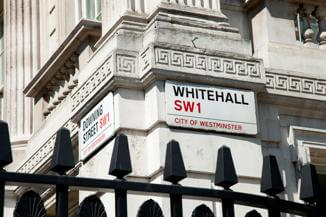With ESG being at the forefront of business strategies across all industries, we wanted to take a closer look at how ESG is affecting the retirement living sector and the challenges that Integrated Retirement Community providers are being faced with.
On Tuesday 24 January 2023, representatives from ARCO, Pegasus Group, Cinnamon, Anchor, Belong, AXA IM Alts, Extracare Charitable Trust, DLP Consultants and PRP LLP joined lawyers from Browne Jacobson to discuss the impact of ESG on their respective businesses and on the retirement living sector more generally.

From left to right: Vicky Tomlinson - Browne Jacobson, Ben Collard – Cinnamon, Jenny Buterchi - PRP LLP, Jonathan Rainey – Pegasus Group, Debbie Brayshaw – Extracare Charitable Trust, John Roddy – Browne Jacobson, Leanne Taylor – Anchor, Andrew Ovey – AXA IM Alts, Victoria Thourgood – Browne Jacobson, Roland Bolton - DLP Consultants, Ben Standing – Browne Jacobson, Sally Ireland – ARCO, Helen Taylor – Browne Jacobson, Martin Rix – Belong.
Sustainability is top of the agenda for investors, it is no longer considered just a ‘nice to have’ but is imperative and demanded at all levels, but why?
ESG is becoming the full focus of debt providers. If borrowers do not engage with ESG then there is a risk that mainstream banking will essentially be turned off. This directly affects investor backed corporate borrowers.
The retirement living sector can clearly demonstrate strong ESG credentials through factors such as new developments being funded by a ‘Green Loan’. This can be seen as an incredibly exciting opportunity for Integrated Retirement Community investors switching their focus to ESG as they can clearly demonstrate strong green and sustainable credentials when wanting to access debt backed green and sustainable products.
Andrew Ovey of AXA IM Alts discussed how ESG is impacting their business:
“It affects our decisions on retirement living schemes, not just on how we can achieve net-zero but on the whole environmental impact of a scheme, it is a new language that is embedded in everything we do. I think that there is some perception of over-indulgence in Environmental in investment holdings, and it does come at a cost, but it is something that we need to do, not just for us as a business, but for everyone.”
So, investors demand it, society expects it, regulators are mandating it, but what does the ‘E’ in ESG really mean?
With buildings currently accounting for 40% of the UK’s total energy usage, the discussion naturally turned to improving the energy efficiency of buildings as being vital to achieving net-zero. However, the group agreed that environmental goes beyond net-zero and also involves important considerations around species loss, loss of habitats and bringing life to the ecosystem, which needs to be considered from the outset at the planning and design stage, and also needs to be managed on an ongoing basis.
Jenny Buterchi of PRP spoke of how increasing the environmental credentials and biodiversity net gain on projects is something that they as a business have been tasked with, and are increasingly having to improve on existing sites. This can be a challenge when you have existing residents that can resist change due to financial implications. They are also looking at health and wellbeing of people who work in and visit the retirement homes they work on, not just the residents. Social and governance seem to receive less attention than environmental, but it is equally important to consider these at design stage too.
The increasing cost of energy was also discussed, with Ben Collard of Cinnamon noting that where technology can be used to reduce energy waste, this also requires residents to engage with the technology on offer and staff to be educated on how to use it effectively. Others around the table agreed that they had encountered issues with residents not using smart systems effectively to manage the overall energy efficiency of the building or deliberately overriding heating systems, for example. The need to consider how you will educate residents about the smart technology in their buildings in a user-friendly way was noted.
How will providers manage the cost of complying with their ESG obligations?
Browne Jacobson’s Vicky Tomlinson questioned whether smaller developers and providers or new entrants to the market would be so put off by the increasing demands regarding ESG, that it may price them out altogether.
It was recognised by the round table that setting ESG agendas may seem overwhelming, and it is especially challenging for companies with limited resources. There are however a number of opportunities for keeping control of the cost of incorporating ESG and these should be identified early on, and there are also a number of investors with an appetite for green investments.
“Inevitably, we need to look at viability; there will be a reality as to what we can afford to do,” agreed Martin Rix of Belong.
Sally Ireland of Associated Retirement Community Operators (ARCO) noted that properties with high energy efficiency ratings are resisting price drops in the current market. She noted that development margins are lower than for ordinary housebuilders because of the extra communal facilities provided. “We want greener developments, but it has got to work for the developers.” ARCO are currently running an accelerator programme for those building their first Integrated Retirement Community. They emphasise that running Integrated Retirement Communities is a long-term operational proposition, rather than an opportunity for a developer to make a quick return and then move onto the next project.
Roland Bolton of DLP consultants was keen to share his thoughts on New Zealand’s approach: “they don’t see themselves as house builders, they see themselves as care providers,” and the group agreed retirement living developments should not be undertaken by those looking for a quick exit strategy. The need to create a community for the residents and then continue to support it was unanimously supported. However it was noted that the timeframe from land purchase to a stabilised asset being approximately 15 years was one saving grace in putting off those looking for a short-term investment.
What is the driving force behind wanting to engage with ESG for businesses, aside from it being an expectation and the right thing to do?
There are many factors driving investors to engage with ESG. As debt providers are offering more green finance products and sustainable finance products, by accessing such products investors can build stronger, values-based relationships with a range of stakeholders. Accessing green finance can be a powerful promotional tool and mainstream lenders will encourage borrowers to say they have accredited green and/or sustainable finance. Andrew Ovey of AXA IM Alts also pointed out that “when you risk having a stranded asset that becomes untradeable, then it sharpens your investment focus. The investment decision includes potential redundancy in the assets.”
Establishing a strong ESG strategy strengthens brand reputation, is attractive to investors and will help future- proof the business in the long term.
Browne Jacobson’s John Roddy queried what could be done with existing residences, as the focus seems to be predominantly on new developments. This is against a background where perhaps the depreciation/sinking fund which has been set aside for refurbishment, hasn’t been provided at a sufficient level to now incorporate relevant Environmental aspects.
Jenny Buterchi of PRP LLP explained how difficult it is to go back and retrofit stock, while Andrew Ovey of AXA IM Alts confessed that the ability to buy back stock was a blessing when you look at taking back stock as an opportunity to change a community for the better.
However, providers don’t always have the ability to buy-back units and there remains a risk to freeholders of a long lease, where you have a depreciating asset that is not energy efficient, and you are limited to what you can do under the terms of the existing lease.
One resolution could be ARCO’s leasehold plus model. Under the current leasehold model, when a retirement living unit is sold from one resident to another, the existing lease is assigned to the incoming tenant. However, ARCO is lobbying for an arrangement whereby each time a prospective buyer is found, the occupational lease is effectively "sold back" to the operator, thereby enabling them to grant a new lease, meaning there is an opportunity for the lease terms to be varied at that stage.
What social initiatives are there?
The retirement living sector has an obvious focus on the ‘S’ in ESG and the social impact on residents and their families, employees and local communities is far reaching and incudes: helping to reduce the burden on the social care sector in the NHS; providing a focus on health and wellbeing for seniors and employees alike; Integrated Retirement Communities can assist in freeing up local housing and they provide amenities and employment support for local communities.
Diversity and inclusion (D&I) was also discussed with the panel recognising that Integrated Retirement Communities don’t just create a diverse place to live, but also a diverse place to work and it’s great to see a number of D&I specific initiatives including faith-based villages and LGBTQ+ specialist communities, but there is still more that can be done with a recognition that in terms of D&I initiatives, these should be village specific and reflective of the local demographic.
Martin Rix of Belong spoke about putting the ‘S’ in ESG:
“Diversity is important, mixed tenures give people affordable options, there are inter-generational initiatives, faith-based villages, and it is not just about creating a diverse place to live, but also a diverse place to work.”
Promoting diversity in the workplace also helps to attract quality employees and retain them. Debbie Brayshaw of Extracare Charitable Trust shared some insight into mixed model tenures and how she had seen an increase in residents looking to rent in recent years.
Where does governance fit in?
In a sector that is crying out for regulation, it is acknowledged that ESG can’t simply be a tick box exercise.
Sally Ireland of ARCO shared that while ARCO has its own Consumer Code, they have been asking for sector-specific government regulation:
“We worry about reputational risk. If there is a non-ARCO member behaving badly, people on the ground won’t know they are a non-member.”
However, it was also noted that the majority of current providers do genuinely want to deliver on ESG.
Browne Jacobson’s Helen Taylor wondered whether planning could have a positive impact on the social initiative if policymakers engaged more with it. The consensus was that while ESG is the main focus of investors, developers, providers and operators, local planning policy has a long way to go before it catches up with introducing targets to meet social needs.
We followed up on some of the themes that emerged from a roundtable event at a webinar on Tuesday 7 February 2023.
Contact

Victoria Thourgood
Partner
victoria.thourgood@brownejacobson.com
+44 (0)330 045 2208









































